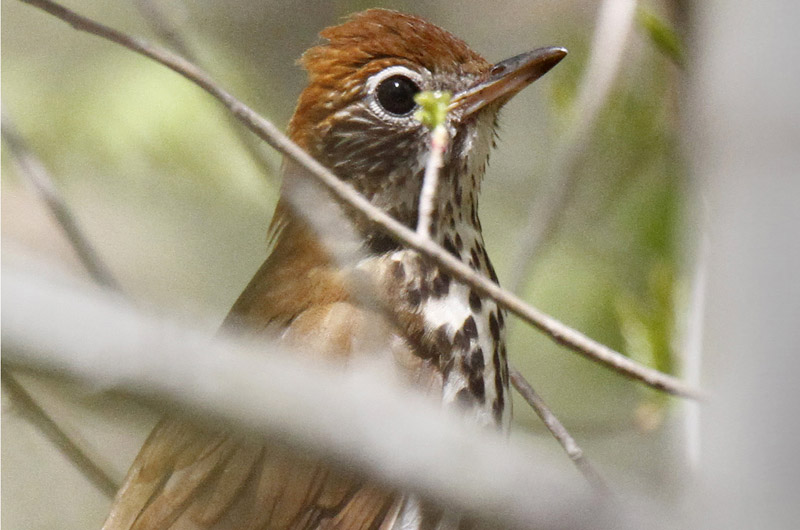It is close to the peak of the breeding season, and soon the early morning chorus of bird song will start quieting down. Using the methods discussed in the Bird News columns from the previous two weeks (building nests, carrying vegetation, incubating eggs, carrying food and baby birds) has allowed many observers to confirm that 45 specie listed below are breeding on the Island.

They are: Canada goose, mute swan, black duck, mallard, wild turkey, double-crested cormorant, osprey, northern harrier, red-tailed hawk, piping plover, killdeer, American oystercatcher, willet, American woodcock, herring gull, great black-backed gull, least tern, roseate tern, common tern, black skimmer, rock pigeon, mourning dove, screech owl, ruby-throated hummingbird, eastern phoebe, red-eyed vireo, American crow, tree swallow, rough-winged swallow, bank swallow, barn swallow, black-capped chickadee, tufted titmouse, Carolina wren, American robin, gray catbird, European starling, blue-winged warbler, yellow warbler, redstart, song sparrow, northern cardinal, common grackle, Baltimore oriole, house finch, house sparrow.
That is less than half of the species known to breed on the Island. But the season for seeing baby birds is just beginning, so we expect to have many more species confirmed as breeders in the next month. Please let me know if you add a species to this list, and what you observed to confirm the nesting.
Bird Sightings
A black tern, observed on June 18 on Norton Point Beach by Lanny McDowell, is the bird of the week. These small terns are rarely seen in the spring. According to the website ebird there are only a handful of sightings in June in the northeastern United States. It was with larger common terns and even larger laughing gulls, and had not completely molted into its full breeding plumage. Most black terns breed north and west of the Great Lakes, but they range east to central Maine and Atlantic Canada.
Sarah Mayhew has been watching a pair of northern harriers near the Quansoo gate. The male harrier approached the next carrying a rodent and called to the female. She then left the nest, flew up toward him, caught the rodent the male dropped, and then took the rodent back to her nest to feed the young chicks. This behavior happens very quickly. Observing it confirms that the harriers are nesting nearby.
Becca LaMarche spotted a great egret in an unusual locale, walking along a dock in Edgartown Harbor at sunrise on June 15. What was it doing there?
Matt Pelikan conducted the annual United States Geological Survey’s Breeding Bird Survey on June 15. This annual count started at 4:37 a.m. and consisted of 50 roadside stops at half mile intervals. He looks and listens for three minutes at each stop, identifying and counting every individual he sees and hears. This year’s highlights include whip-poor-will (a first for this long-running survey), northern parula, wood thrush and scarlet tanager. He was hoping to record an indigo bunting, but was not successful.
Ken Magnuson heard a red-breasted nuthatch calling at the Edgartown Golf Club on June 16. This is the only recent record for this species.
Christie Coon has been hearing prairie warblers singing in the shrubs and low trees behind the beach at West Chop. Their song—a fairly rapid climbing the scale with each note higher pitched than the previous one—is quite distinctive.
It is nesting season and many birders shift attention to documenting nesting habits. Please be sure to report your sightings to birds@mvgazette.com.
Robert Culbert leads Saturday morning Guided Birding Tours and is an ecological consultant living in Vineyard Haven.





Comments (1)
Comments
Comment policy »